
Adie, George
George Adie first studied with P.D. Ouspensky and later Gurdjieff. After many years in England working with other prominent pupils such as Henriette Lannes and Jane Heap, Mr. Adie moved to Australia and established groups there.
Adie, Helen
One of England’s leading concert pianists, Helen Adie played and wrote music for the movements. After Gurdjieff’s death, she moved to Australia and helped establish the Gurdjieff Society of Newport.
Anderson, Margaret
Margaret Anderson and Jane Heap were founding editors of the legendary Little Review. She met Gurdjieff in New York in 1924 and shortly thereafter relocated to Paris, partly to study with him at his Institute at Fontainebleau. She then continued to study with Gurdjieff in France until his death.
Anderson, Paul E.
On his last visit to America, Mr. Gurdjieff chose Paul Anderson as his last American Secretary, stating “He not only has eaten one dog, but swallowed whole packs of dogs … and I rest very contented when I leave because you are my special American Secretary.”
Beidler, Paul H.
In the early 1930s, Paul Beidler met Gurdjieff at the Prieuré. Gurdjieff was very interested in what the young Paul Beidler had learned about the Yezidis. Later in 1949, he became an early member of the Gurdjieff Foundation of New York and also worked with Madame Ouspensky at Franklin Farms. In the 1973 he founded Northeon Forest in rural Pennsylvania.
Bennett, John G.
J. G. Bennett was a British scientist, mathematician, and philosopher who integrated scientific research with studies of Asiatic languages and religions. Bennett travelled widely and met many spiritual leaders. In the early 1920s, he was introduced to G. I. Gurdjieff and P. D. Ouspensky, who both became central guiding forces in his life.
Bennett, Elizabeth
Elizabeth Bennett joined John G. Bennett’s group in Coombes Spring in England in 1944 and met Mr. Gurdjieff in 1948. She married Bennett in 1958 and later worked with him for the rest of his life at Sherborne where they received many students.

Benson, Martin
Martin Benson met Gurdjieff in France in the early 1930s. He experimented with farming methods in Europe, and his original and inventive ideas were behind studies at Mendham and Armonk including glass-blowing, iron work, and the creation of an Aeolian wind harp.

Benson, Rita
Rita Benson coached many famous actors and directed the American Academy of Dramatic Arts. She met Gurdjieff in 1923, and in the early 1930s served as his secretary. An active member of the New York Foundation, she led a Bunraku theatre study at Armonk.

Brooking, Nesta
Nesta Brooking was a pupil of both Ouspensky and Jane Heap. When World War II ended, Jane Heap took her group to meet Gurdjieff in Paris. Nesta was then a faithful follower of the Gurdjieff Work until her death.
Capper, Margaret
Margaret Capper was born in Ireland. She joined the Ouspenskys in Gadson, England in the early 1930s and followed them to Mendham in 1940.
Claustres, Solange
Solange Claustres was born in Tunisia and studied music in Marseille as a young girl. When she was 20 she joined a group in Paris with Mme. de Salzmann and was in a Movements class with Mr. Gurdjieff. She later served as a Movements instructor in the Paris Foundation for the rest of her life.

Collin, Rodney
Rodney Collin was a prominent pupil of P.D. Ouspensky.
Conge, Michel
Dr. Conge was a French physician and prominent french pupil of Gurdjieff. Through his life of work, Conge was a faithful heir of Mr. Gurdjieff. The diversity of the means he used shows what a living tradition can be, a “creative tradition” without imitation or repetition, which preserves its own originality.
Cornelius, George & Mary
George Cornelius and his wife Mary worked with J.G. Bennett. When it was discovered that Gurdjieff was still alive, they went to France to work directly with him. After Gurdjieff’s death, they formed groups in Kodiak and Anchorage Alaska. In 1981 they formed a work community in Cave Junction, Oregon.

Currer-Briggs, Michael
Michael Currer-Briggs, a film and television producer in London, worked closely with Jane Heap in the late 1930s. During the post-war period, he visited Mr. Gurdjieff in Paris. After Gurdjieff’s death, Michael worked with Mme. de Salzmann and Peter Brook on the production of the film Meetings With Remarkable Men.

Dampierre, Pauline de
Pauline de Dampierre spent time with Mr. Gurdjieff during the war years in Paris, when he instructed her to write about his teaching. From the 1950s to the 1980s, Pauline compiled her Notes on the Work (unpublished) which she worked on in conjunction with study groups on the Movements, music, and on the ideas of the Work.

Darlington, Dorothy
An accomplished musician, Dorothy Darlington joined the Ouspensky group in London when she was 24 and moved to Franklin Farms in Mendham, NJ where she presided over the kitchen. She met Mr. Gurdjieff when he visited Mme. Ouspensky at Mendham. She was devoted to Mme. Ouspensky and cared for her until her death.

Daumal, René
One of the most gifted literary figures in France in the early part of the twentieth century, René Daumal was a genuine seeker of truth. In the later part of his life, he had the good fortune to meet and work with Gurdjieff.
Desselle, Maurice
After Gurdjieff’s death in 1949, Maurice Desselle carried on with the transmission of inner Work, alongside such people as Henriette Lannes, Henri Tracol, and other contemporaries, under the guidance of Mme. de Salzmann.
Dooling, Dorothea
Born in Ohio, Dorothea Dooling met Mr. Gurdjieff in 1942 and was the first secretary of the New York Gurdjieff Foundation. She carried responsibility for the groups in Boston and Lima, Peru, and was the founding editor of Parabola Magazine.

Elliot, Pierre
In the 1930s, Pierre Elliot was a frequent guest of the Ouspensky’s at Lyne Place. After Ouspensky’s death in 1947, Pierre made contact with Gurdjieff in Paris. In 1947-1949, he went to Paris as often as possible. After Gurdjieff’s death, Pierre lived at J.G. Bennett’s Coombe Springs estate.

Elliot, Vivien Healey
Vivien Healey was a member of Franklin Farms at Mendham, NJ. When she heard that Gurdjieff was alive and in Paris, she went straight there. She met Gurdjieff on March 13, 1949 and became one of the “calves”. In 1953 Vivien married Pierre Elliot.

Entwistle, Clive

Entwistle, Helen
There were perhaps few moments in Helen’s life that did not present great difficulty—and yet it was precisely these difficulties and the work that they engendered that were the raw material that she relished. For her they were the stuff of learning and self-knowledge.

Etievant, Alfred
Three reminiscences of working in Movements classes led by Alfred Etievant (1918–1967). He met Gurdjieff during the German Occupation of Paris and, after the war, Gurdjieff sent him to London and New York to work with the Movements. Alfred then moved full-time to New York.

Etievan, Jacques
Born in France, Jacques Etievan (1920–1973), was the notetaker for the 1943 Paris Meetings with Gurdjieff. He then moved to Caracas, Venezuela where he headed up a large advertising firm. He married Nathalie de Salzmann and was a strong support for the formation of the group in Caracas.

Etievan, Lise
Niece of Henri Tracol, Lise Tracol Etievan has been in the Gurdjieff Work her whole life. As a young girl, she took care of Mr. Gurdjieff towards the end of his life. In the 1950s she married Alfred Etievant and moved with him to New York. After Alfred’s death she moved back to France with her two daughters, where she carried responsibility for the Movements at the Paris Foundation for many years.

Faidy, Diana Huebert
A dancer who lived in Chicago, Diana Faidy (1899–1983) met Gurdjieff when he visited the Chicago group in the 1930s. After Gurdjieff’s death, she became the pupil of Olgivanna Lloyd Wright.

Field, Hylda
Hylda became a member of the Ouspensky group in London in the 1930s. She was at the flat in Paris with Mr. Gurdjieff toward the end of his life. She gave her time unstintingly to the typing of All and Everything in preparation for its publication.

Flinsch, Peggy
Margaret Flinsch (1907–2010) met Mr. Gurdjieff in 1926 and spent time at the Prieuré. As a founding member of the New York Gurdjieff Foundation, she led groups, established the children’s work, and managed the archives. She founded the Blue Rock School in 1982.

Forman, Thomas
Tom Forman (1910–2001) met P. D. Ouspensky in his native England and followed him to the United States, where he met Mr. Gurdjieff. He was responsible for the preservation of the Gurdjieff / de Hartmann music, and led groups in New York, Philadelphia, and Cleveland.

Fremantle, Christopher
The tall, soft-spoken Christopher Fremantle first met P. D. Ouspensky in 1935. Later he was introduced to Gurdjieff in Paris and worked with him until G’s death. In 1951, he started groups in Mexico and worked with them for the next 30 years. He also led groups in the U.S.
Gaigneron, Marthe de
Marthe de Gaigneron studied classical dance with Alexandre Volinine. She met Gurdjieff in 1943 and attended his Movements classes. She later served as a principal instructor of Movements in Paris and London.

Haggarty, Joanna
Joanna Haggarty attended the last of Ouspenky's lectures in 1946–1947, and then joined one of Kenneth Walker’s groups. She was present briefly in April 1949 in Mr. Gurdjieff’s flat. She began learning the Movements in 1949 from Alfred Etievant and later she taught them for many years.
Hana, Emil
Emil Hana was born in Wisconsin. He studied theatre in New York where he met Tosca Bissing, a pupil of Ouspensky. Emil became a part of the life at Franklin Farms and was known as a tireless worker.
Hands, Rina
A pupil of both Ouspensky and Bennett, Rina Hands met Gurdjieff in Paris in 1948. From then on she spent every possible moment in Paris, typing drafts of Beelzebub and trying to bring the teaching to life in herself. These experiences she describes in her book The Diary of Madame Egout Pour Sweet.
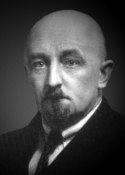
Hartmann, Thomas de
Thomas de Hartmann was born in the Ukraine and was already an acclaimed composer in Russia when he first met Gurdjieff. He spent the years 1917–1929 as a pupil and confidant of Gurdjieff. While at the Prieuré, he collaborated with Gurdjieff to compose hundreds of musical works that continue to inspire listeners.
Hartmann, Olga de
Olga de Hartmann was a major figure in the transmission of the teachings of Gurdjieff. Having met Gurdjieff in 1917, she worked with him intensely in very trying and even dangerous conditions until 1929. She was Gurdjieff’s private secretary for many of these years and often helped with his writings.
Heap, Jane
Even before she met Gurdjieff, Jane Heap was a legendary thinker and raconteur. She first met A. R. Orage through her work on The Little Review and Gurdjieff during his 1924 visit to New York. In the fall of 1935, Gurdjieff sent Heap to London to direct groups.
Herter, Annette
Born in France, Annette Herter moved to New York in 1924. In 1939 she founded “The American Conservatory of Music, Drama and Dance” which performed Varese’s Chorus at the World’s Fair. After meeting Gurdjieff, she played for the Movements in New York and at Franklin Farms.

Howarth, Jessmin
Jessmin Howarth was one of the accomplished women who contributed to the transmission of Gurdjieff’s Movements.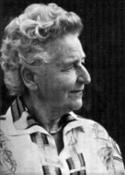
Hulme, Kathryn
Author of The Nun’s Story, The Wild Place, and Undiscovered Country (a description of her years with Gurdjieff). A woman of boundless energy, she was also an astute and perceptive observer of life around her.King, C. Daly
Daly King was born in 1895 and graduated from Yale, where he also completed his doctoral studies in psychology. He wrote a number of books on psychology as well as mystery novels. In 1924 he met Orage who became the greatest influence in his life. His book, The Oragean Version, was published in 1931.
Lannes, Henriette
That the Work in England is today so firmly established is preponderantly owed to one woman. Active in London for nearly three decades, this remarkable human being guaranteed the Work’s ethos, dynamic, and trajectory. Her name was Madame Lannes.Leighton, Fred
In the 1930s, Fred Leighton met Gurdjieff and in collaboration with Israel Solon and Donald Whitcomb, he acted as administrator of needed funds and travel arrangements. In the early 1940s, he was an active participant in efforts to secure emigration rights for Gurdjieff.
Lester, John
John Lester, a native of Australia, went to England in 1939 to study medicine. His life was forever altered when he met Jane Heap and then Mr. Gurdjieff, who he visited in Paris with other members of Jane’s London group after the war.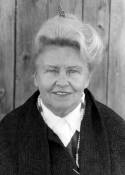
March, Louise
One evening in early 1929, Lousie March was invited to the studios of Carnegie Hall, where Gurdjieff was hosting a recital of piano music. By late spring, she found herself crossing the Atlantic to live and study at his Institute for the Harmonious Development in France.

Mayers, Bernard Courtenay
A native of British Columbia, Bernard Courtenay Mayers served in the British Royal Army Medical Corps during the Second World War. He met Gurdjieff in 1948, and later became an active member of the London Society, where he was elected Chairman of the Council in 1988.

Merston, Ethel
Ethel Merston was with Mr. Gurdjieff at the Prieuré in Fontainebleau from its founding in 1922 until she left in 1927. She carried responsibility for the gardens and the cows and participated in the construction of the Study House.

Mills, John
When 19 years old, John Mills was introduced to Mr. Gurdjieff and spent time with him in Paris and New York. His career was inspired by Mr. Gurdjieff who told him to leave Paris to study “for a piece of paper!” John was a generous benefactor of the Work throughout his life.

Morris, Lawrence
Having become interested in Gurdjieff’s teaching in the 1920s, Lawrence Morris spent time at the Prieuré in the 1930s. He studied with Orage in New York and was an original member of the New York Gurdjieff Foundation in the 1950s and 1960s.
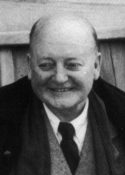
Nicoll, Maurice
In 1921, Dr. Maurice Nicoll was Jung’s leading exponent when he met P. D. Ouspensky. The following year, he went to the Prieuré to study directly with Gurdjieff. He afterwards resumed his psychiatric practice in London and studied under Ouspensky until 1931 when Ouspensky gave him permission to teach.
Nott, C. Stanley
In 1923, C. S. Nott first met Gurdjieff and A. R. Orage in New York. At the Prieuré, Nott experienced sustained and intense periods of inner work with Gurdjieff. He was also a close associate of Orage, Dr. Stjoernval, Thomas de Hartmann and later Ouspensky.
Nyland, Ilonka Karasz
Along with her husband Willem Nyland, Ilonka Karasz (1896–1981) met Mr. Gurdjieff in New York in 1924. They were group leaders at the New York Foundation. Ilonka was an accomplished designer and artist. One of her many accomplishments was creating 186 covers for The New Yorker Magazine.

Nyland, Willem A.
Mr. Nyland first met Gurdjieff in 1924 and was one of the founding members of Orage’s New York group. He maintained close contact with Gurdjieff for the next 25 years. Mr. Nyland was also one of the original founders and trustees of the Gurdjieff Foundation and started his own groups in America and Europe.
Orage, Alfred R.
A. R. Orage was a leading pupil of Gurdjieff. Having met Ouspensky in 1914 and later Gurdjieff in 1922, Orage surrendered the forefront of intellectual life in London to study at the Prieuré. In January 1924, Orage went to New York to help Gurdjieff with his first visit to America and later introduced and supervised the Work there.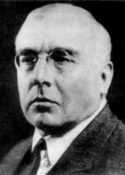
Ouspensky, Peter D.
P. D. Ouspensky was a major contributor to Twentieth century ideas. He anticipated many of the key questions in philosophy, psychology and religion that have driven and informed us throughout the century. He studied intensively with Gurdjieff between 1915–1918 and throughout the rest of his life continued to promote Gurdjieff’s system.
Ouspensky, Madame
Madame Ouspensky was a major contributor to the transmission of Gurdjieff’s ideas and teachings. She directed the studies of Gurdjieff's work at Mendham, New Jersey.
Pearce, Cynthia
A British citizen, Cynthia Pearce (1900–1977) met Mr. Gurdjieff in Paris. She was an active member of the New York Gurdjieff Foundation where she organized the library and headed a group in traditional studies. She initiated the Gurdjieff Work in Philadelphia in 1967.
Pearson, Nancy
Nancy Pearson, after years spent in India and the Far East, encountered the Work in England. At the end of World War II, she followed the Ouspenskys to Franklin Farms in New Jersey. At one time, she was secretary to J.G. Bennett and at another to John Steinbeck.
Pentland, John
Lord Pentland was a pupil of Ouspensky for many years during the 1930s and 1940s. He began to study intensely with Gurdjieff in 1948. Gurdjieff then appointed him to lead the Work in North America. He became president of the Gurdjieff Foundation when it was established in New York in 1953 and remained in that position until his death.
Pentland, Lucy
Born in England, Lady Pentland worked with P. D. Ouspensky in London and met Mr. Gurdjieff in 1949. She married Lord Pentland and after the war, moved with him to the United States. She was a stalwart participant in the activities of the New York Foundation.

Phillpots, Dorothy & George
The Phillpotts attended enormous meals at 6 rue des Colonels Renard, between June 1948 and July 1949. They also took part in Movements classes at the Salle Pleyel

Popoff, Irmis
Irmis Popoff (1900–1984) worked with P. D. Ouspensky and met Mr. Gurdjieff after Ouspensky’s death. She later worked with Mme. Ouspensky, Willem Nyland, and John Pentland. She led a large group at Pinnacle House in Sea Cliff, NY until her death in 1984.

Reynard, Paul
Paul Reynard joined a small group in Paris led by Henriette Lannes in 1946. He began to practice the movements in 1947 with Jeanne de Salzmann, and joined the senior class under the direction of Mr. Gurdjieff that fall. He began as a movements instructor under Marthe de Gaigneron, and in 1969 began to lead classes at the Gurdjieff Foundation of New York and other US as well as Canadian Gurdjieff Foundations.
Ripman, Hugh
Hugh Ripman began as a pupil of Ouspensky, then went on to study directly with Gurdjieff in 1948. After meeting Mr. Gurdjieff, Hugh Ripman began to gather a group of people in Washington, DC.Rosette, Blanche
Blanche Rosette was an early and staunch member of the first Gurdjieff group formed in New York. She was instrumental in the search for a house of the Work in the early 1950s and it was her initiative which established the library of the New York Foundation.
Salzmann, Alexandre de
When Alexandre de Salzmann and his wife Jeanne first met Gurdjieff in 1919, he was already a well known stage lighting artist in both Russia and Germany. He soon gave up his professional career to follow Gurdjieff and was one of the founding members of the Institute for the Harmonious Development of Man.
Salzmann, Jeanne de
Having first met Gurdjieff with her husband in 1919, Madame de Salzmann studied with Gurdjieff for three decades. After Gurdjieff’s death in 1949, she took primary responsibility for carrying on the Gurdjieff Work. She published his books and helped preserve the form of his Movements.
Salzmann, Josée de
Josée de Salzmann, a student of the Dalcroze system, met Gurdjieff in 1943. She was an instructor of adult and children’s Movements in Paris, Holland, and Switzerland. For many years, Josée and her husband, Michel de Salzmann, led summer work periods at Chandolin, the Geneva group’s property in the Swiss Alps.
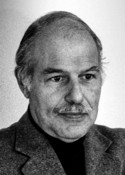
Salzmann, Michel de
From 1990 until his recent passing in August 2001, Dr. de Salzmann directed the network of Gurdjieff foundations, societies, and institutes around the world. His friends salute him as one of the most important spiritual figures of our century.
Salzmann, Nathalie de
The daughter of Mme. de Salzmann, Nathalie de Salzmann married Jacques Etievan and moved with him to Caracas Venezuela where she founded the Caracas group and raised their children. There she held many “Fifteen Days” work periods and established a school.

Segal, Cora
With her husband, Bill Segal, Cora Segal met Gurdjieff in the 1940s and went on to become one of the leaders of the New York Foundation. Professionally, she worked as a writer, journalist, school teacher, and editor at the American Fabrics and Gentry magazines.
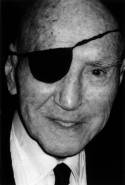
Segal, William
William Segal taught and embodied a threefold life: theosopher, artist, and man of the market. As an artist, he developed an appreciation for the enigma of self-portraiture. To see and be seen simultaneously, he felt, leads toward Essence—toward what truly is, no more, no less.
Sinclair, Beatrice
A resident at Franklin Farms, Beatrice Sinclair met Gurdjieff in his last visit to the United States in 1949. She and her husband Frank Sinclair moved to Rockland County where Beatrice worked as a potter. For many years she was a Movements instructor at the NY Foundation.
Solon, Israel
Israel Solon, the Mr. S. of the Third Series of All and Everything, was born in 1894. He became the secretary of the first Gurdjieff group established in New York and he maintained a close connection with the Work until Gurdjieff’s death in 1949.Spiegelberg, Stanley
In the late 1920s, Stanley Spiegelberg met Gurdjieff in Paris and never deviated in his efforts to be of service as translator or business adviser.
Staveley, Annie Lou
Mrs. Staveley lived in England for more than thirty years and was introduced to the Work by Jane Heap. In 1946, she traveled to Paris to study with Mr. Gurdjieff. She eventually moved to rural Oregon and started a community named Two Rivers Farm.
Sutta, Evelyn
After meeting Mr. Gurdjieff at Mendham in 1948, Evelyn Sutta went to France where she was one of the typists for the manuscript of All and Everything. She participated in activities of the New York Foundation until her retirement to Florida in 1973, where she founded the Miami group.

Tchekhovitch, Tcheslaw
Tcheslaw Tchekhovitch was among the Russians who followed Gurdjieff from Istanbul to Germany, and then to France. After Gurdjieff's death in 1949, he worked closely with Jeanne de Salzmann before his own death in 1958.
Thomasson, Henri
Henri Thomasson's first contact with the Work occurred in Paris in 1947, where he participated in a small group led by Mme Henriette Lannes, who later introduced him to Mme de Salzmann and Gurdjieff. He went on to start new groups in Italy.
Tilley, Basil

Tilley, Irene
Irene Tilley met her husband, Basil, in 1940 at Lyne and they married in November 1941. By then the Ouspenskys had left for America and the Tilleys went to see them after the war in 1946. Mrs. Tilley remained at Mendham to work with and care for the widowed Madame Ouspensky.

Toomer, Jean
A widely acclaimed writer of the Harlem Renaissance, Jean Toomer came to Gurdjieff through A. R. Orage’s New York City Group, and went to the Prieure in 1924 and 1926. Toomer acted as an important fundraiser for Gurdjieff’s projects in America, and set up Work groups in Harlem, Chicago, Wisconsin and in California.
Tracol, Henri
Former journalist, photographer and sculptor, Henri Tracol was also a close pupil of Gurdjieff for ten years. As a leading exponent of the Gurdjieff teaching, he was President of the Gurdjieff Institute in France.
Travers, Pamela
Although there is uncertainty as to where and when Pamela Travers first met Mr. Gurdjieff, she spoke more freely about her friendship with A. R. Orage which developed when he published one of her poems in the New Age.
Walker, Kenneth
Kenneth Walter—a gifted surgeon—first met P. D. Ouspensky in 1923. He studied and practiced the ideas of Gurdjieff from that time until his death in 1966. A prolific author, his Venture with Ideas and A Study of Gurdjieff’s Teaching provide valuable introductions to Gurdjieff’s ideas.
Welch, Louise
Louise Welch studied with A. R. Orage during his eight years in New York. She went on to become a senior leader in the study of Gurdjieff’s teaching. In her book, Orage with Gurdjieff in America, she provides a vividly personal account of Orage’s background and his continuing influence as Gurdjieff’s representative in America.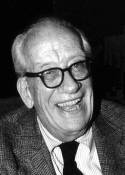
Welch, William
Dr. William Welch attended Gurdjieff at his death and was President of the Gurdjieff Foundation in New York, succeeding John Pentland.Wheeler, Barbara
Barbara Wheeler met the Ouspenskys as quite a young girl and after the second World War, she moved to the United States and took part in the life at Franklin Farms. Later, she taught classes in Movements at the New York Foundation, Washington and Boston.
Wolfe, Edwin
After being introduced to the ideas in 1927, Edwin Wolfe went to the Prieure in France to work with Gurdjieff. After Gurdjieff’s death Mr. Wolfe became a group leader, and was a founding trustee of the New York Foundation.
Wright, Olgivanna
Born in the Principality of Montenegro, Olgivanna Lloyd Wright met Gurdjieff in the early 1920s. She moved to Chicago in 1924 where she met and married Frank Lloyd Wright. In 1932, they established the Taliesin Fellowship which Olgivanna directed after Frank’s death.

Zuber, René
Alsatian by birth, René Zuber met Gurdjieff in 1943 and later worked with Mme. de Salzmann in the creation of films of the Movements. Professionally, he worked as an independent film maker, and was the author of Who Are You, Monsieur Gurdjieff?
